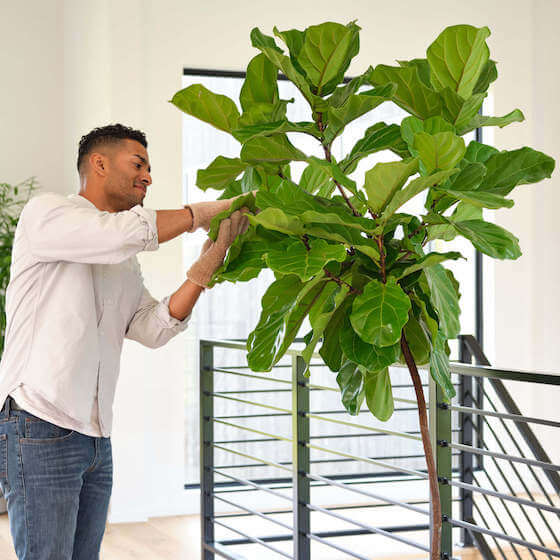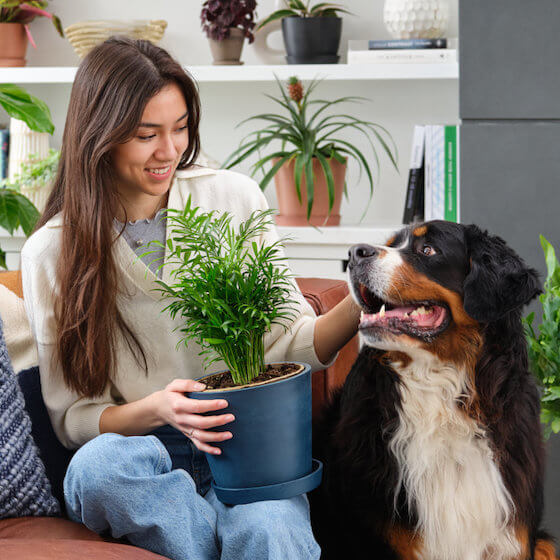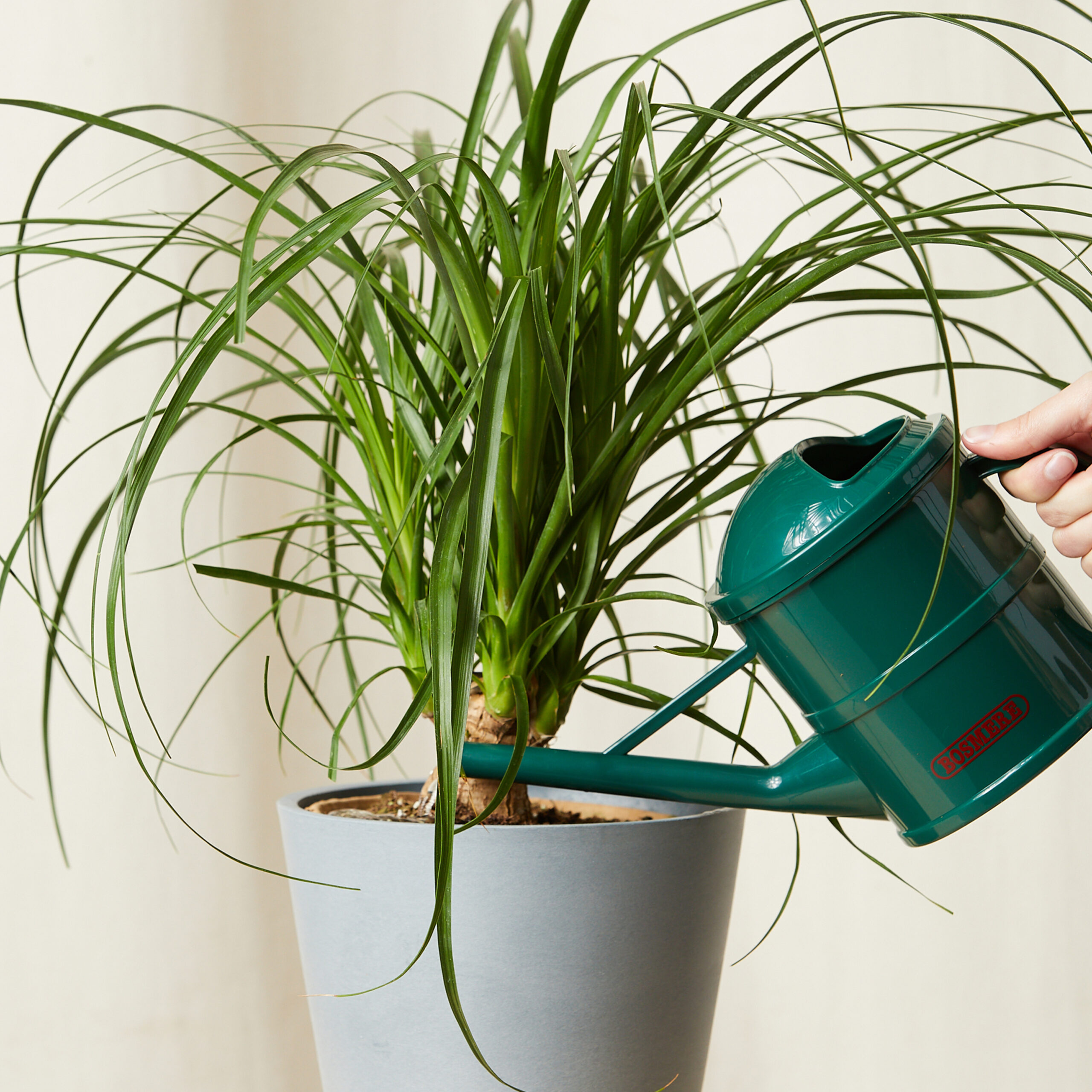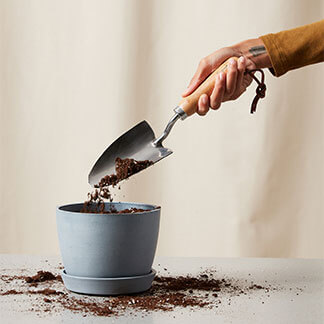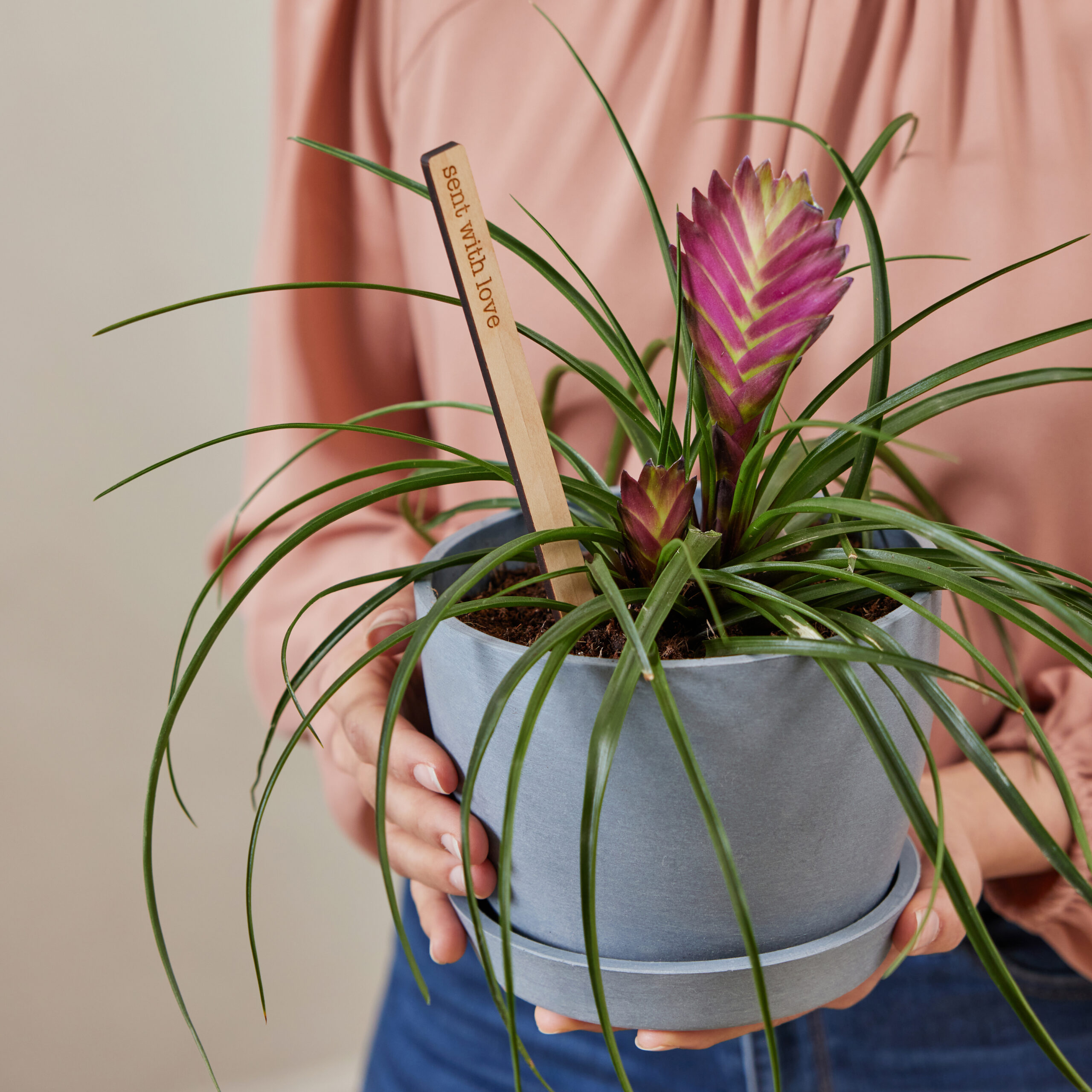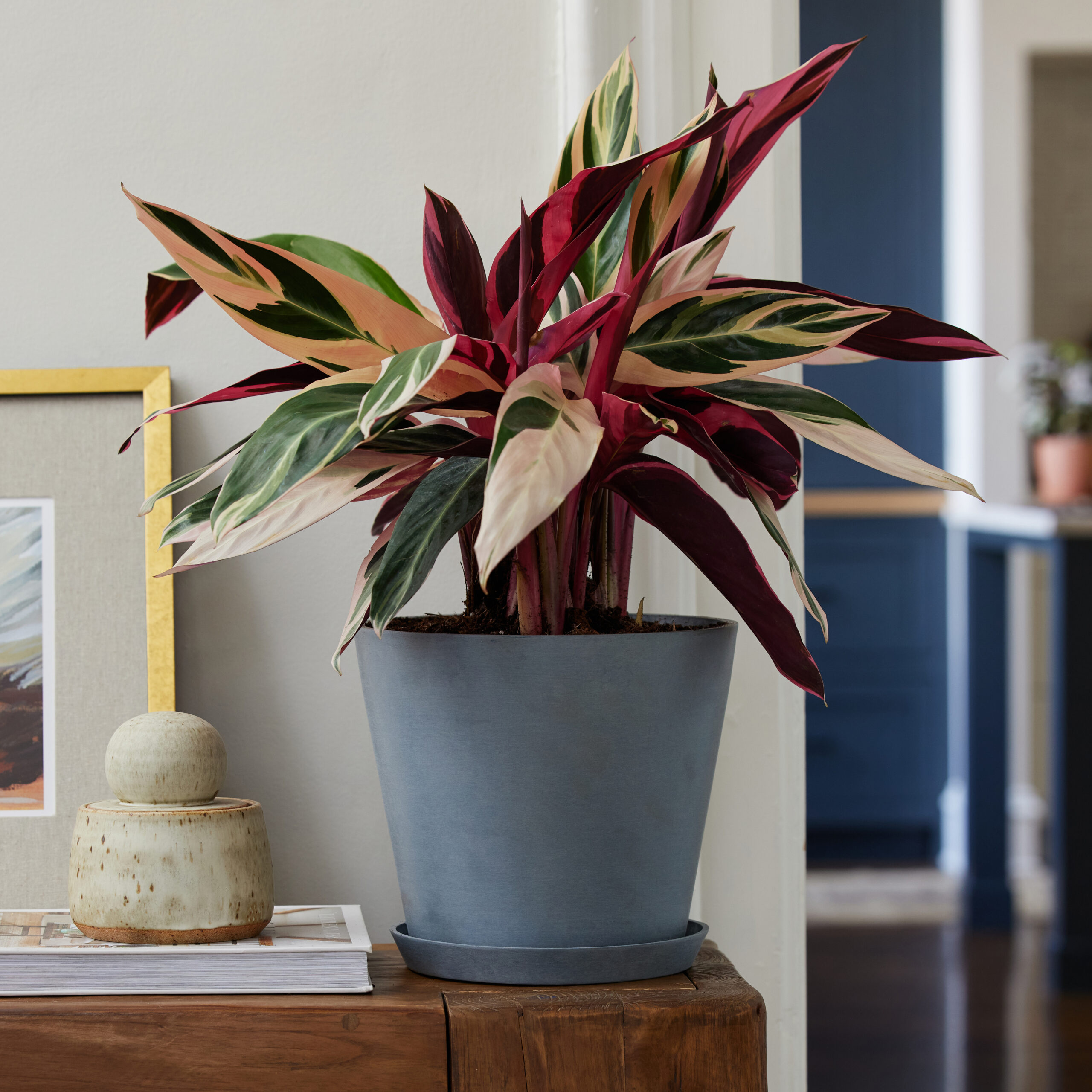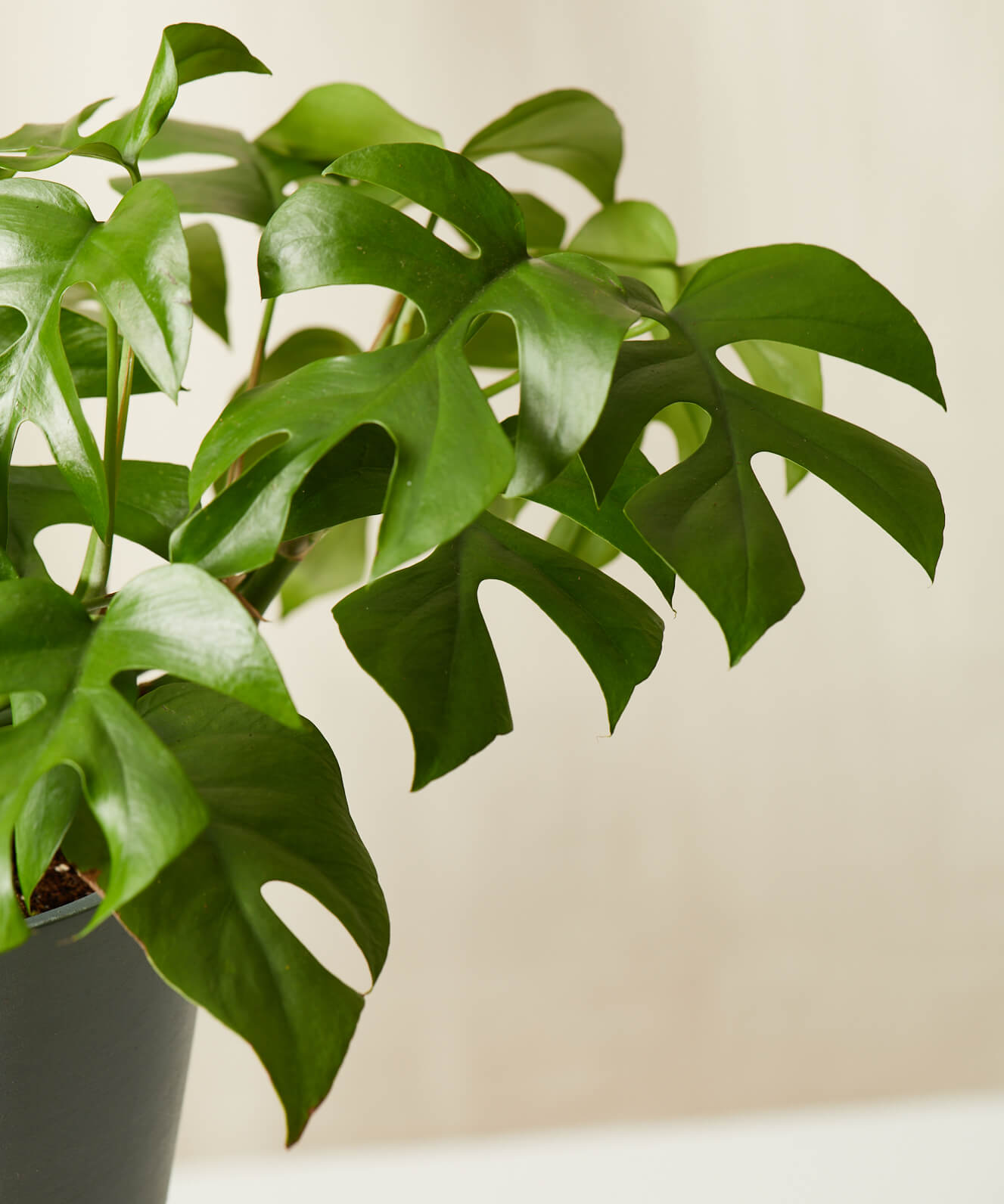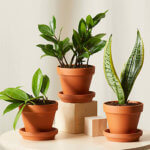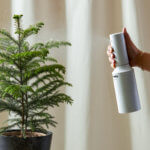Incredibly dry soil
Be sure you’re not over or underwatering your plant. Keep a consistent watering schedule–water when the top 75% of the soil is dry.
If you accidentally let your Rhaphidophora’s soil dry out completely, you may see leaves go limp, droop, and possibly start to brown and curl. If the soil is extremely dry all the way through the pot, a thorough soak is in order.
Here’s how to soak-water your Rhaphidophora:
- Place your plant in your sink or tub without the saucer. Fill your basin up with about 3-4″ of water. Make sure the water isn’t hot!
- Allow your plant to soak up water through the drainage hole in the bottom of the pot for at least 45 min.
- Feel the top of the soil after your plant has been soaking—has the water reached the top 2-3” of soil? If not all the soil feels saturated, water your plant slightly from the top of the soil to help speed up the saturation.
- When your plant’s soil is evenly damp, drain the sink/tub and allow the plant to rest while it drains thoroughly. Place the plant back on its saucer and back in its proper spot.
Temperature
Make sure your plant is not in a drafty area or in the path of heating and cooling vents. Leaves will curl if the plant is cold, or excessively dry from constant air flow.
Not enough humidity
Rhaphidophora are tropical plants, so they will thrive in more humid environments. Increase the humidity around your plant by misting the leaves on a regular basis, using a pebble tray, or moving a humidifier nearby.
